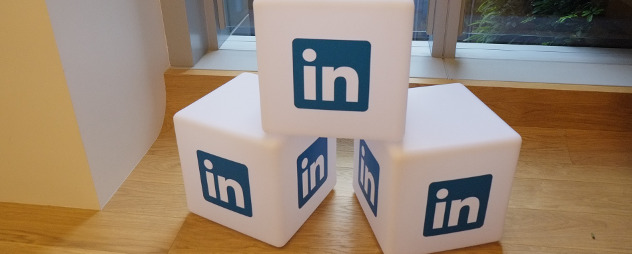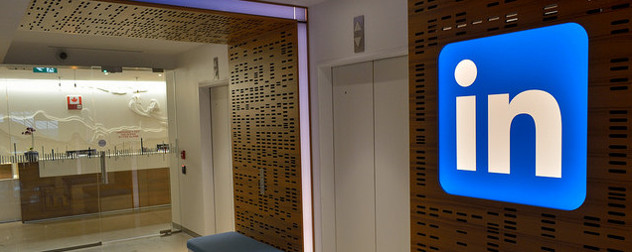
Making a connection between two people who can help one another is one of my favorite things to do at work. LinkedIn is all about making professional connections, so it is not surprising that I am a heavy user of LinkedIn.
I recently came across a plea for help from a professional recruiter (I’m from the generation that still sometimes calls them “headhunters”) who said she has been put in “LinkedIn jail” for approaching too many strangers. According to her post, if a user tries to connect with too many people who report “I don’t know this person,” LinkedIn prevents the user from connecting to anyone whose email they do not know for 30 days, or in some cases longer.
This particular recruiter has more than 500 LinkedIn connections. I can’t tell how many more exactly, because LinkedIn doesn’t disclose a number above 500. But she has accumulated more than 15,000 LinkedIn “followers” who receive the items she posts. That is a prodigious accomplishment. After six years of actively using the site, including posting updates to this blog almost every business day, I have acquired 321 connections and 395 followers. Clearly my social networking skills are not nearly as strong as those of this recruiter. In my defense, she’s a millennial and I am a brontosaurus, but I have also always aimed at quality connections over quantity. And I have never been put in LinkedIn jail.
This recruiter is not the only one to lament LinkedIn’s policies. A quick search uncovered many of her colleagues asking variations on the same question – and some answering it. Stacy Zapar, another recruiter with over 500 LinkedIn connections of her own, explained the four types of “LinkedIn jail” and how her peers can end up relegated to them.
While I don’t know for sure, the recruiter whose plea arrived in my news feed was probably “restricted,” a tier which Zapar says is relatively common – users whose invites get marked as “I don’t know this person” once too often are faced with the temporary email-entering hurdle the original post described. For first-time offenders, restriction is a temporary annoyance, and maybe a reminder to only invite people to your network who you reasonably think will accept your offer. (You can always reach out to them on another platform, or sometimes using LinkedIn’s own InMail feature, to see if they are receptive first.)
LinkedIn itself says users should invite only people they “know and trust” to be a part of their network. LinkedIn also limits first-degree connections, though it is hard to imagine many people could run up against the 30,000-person cap without a stint in LinkedIn’s equivalent of timeout. The number of people who can follow a user, however, is unlimited.
Users who continue activity that LinkedIn identifies as spam-like or otherwise in violation of the site’s terms of service risk more severe consequences. LinkedIn will suspend or even shut down accounts that ignore the social network’s rules too blatantly or too often.
I sometimes reject proposed connections on LinkedIn with an “I don’t know this person” response, which can contribute to getting someone thrown into the service’s penalty box. Mostly those approaches come from people whose agenda is obviously to pitch investment products to my firm’s registered investment adviser affiliate. Anyone who had done even a modicum of research about our firm would know that there are others to whom any such approach would be better directed. Some of these would-be connections probably already know that and hope to use me to override the people and procedures we have put in place to benefit our clients. I’m not interested.
Other contacts come from people who most likely hope to make a buyout bid for my firm. Successful companies’ founders who are my age typically get a lot of these approaches; I average one or two each month. But I have my own plans for the company’s future, and I am not interested in these contacts, either. I learned a long time ago that to every salesperson, your time is free for the taking – as long as you are willing to give it away. I don’t have extra time to give away, though. My employees and clients deserve all the attention I can give them.
I am not anti-social, nor am I anti-social networking. I freely accept connections from many students, professionals, businesspeople and others who read my blog posts or have some interest in common with me. Modest as it is, I value the network of contacts I have accumulated. If I have a question about Delaware’s abandoned property laws, I know a lawyer in Philadelphia who is an expert on the subject and whom I would call in a heartbeat. If a client needs representation buying or selling commercial property in Florida or California, I can put them in touch with someone to assist. I can get advice on everything from music contracts to mechanical engineering. And if someone in my network has a problem, I am happy to help or to direct them to someone else who can.
People use LinkedIn in a variety of ways. Some users accept all sorts of connection requests. Some stick to only people they already know. But it is not outrageous to think that if you send a lot of requests – especially generic ones – to strangers without any sort of prelude, many of them will honestly tell LinkedIn that they don’t know you when declining those requests.
So what would I say to an incarcerated headhunter? Don’t expect people to accept you just because you think “they’re awesome.” In your world, that just makes them part of the inventory you want to keep on your virtual store’s shelves. When you reach out, explain specifically why you think they are awesome, and how you think you might someday be able to help them – or someone else like them, if it turns out they never need your services. Most people on LinkedIn are not looking to accumulate a mass following; there are other platforms for that. If you understand that, you’ll know exactly how to stay out of jail.














October 12, 2017 - 12:00 pm
To the incarcerated headhunter: What value are you adding to people’s lives as a result of these connection requests? Are you adding some insight that will help them be better at what they do? Is there some intriguing statement you can make or stat you can share that might make me say “Wow! This person is worth connecting to?” Saying “You’re awesome – let’s connect!” takes me back to high school – and not in a good way. It was usually said with a heaping side of snark, by the girl who turned me down for homecoming (not the one who turned me down for prom. That’s a topic for another comment).
Add value – not volume.